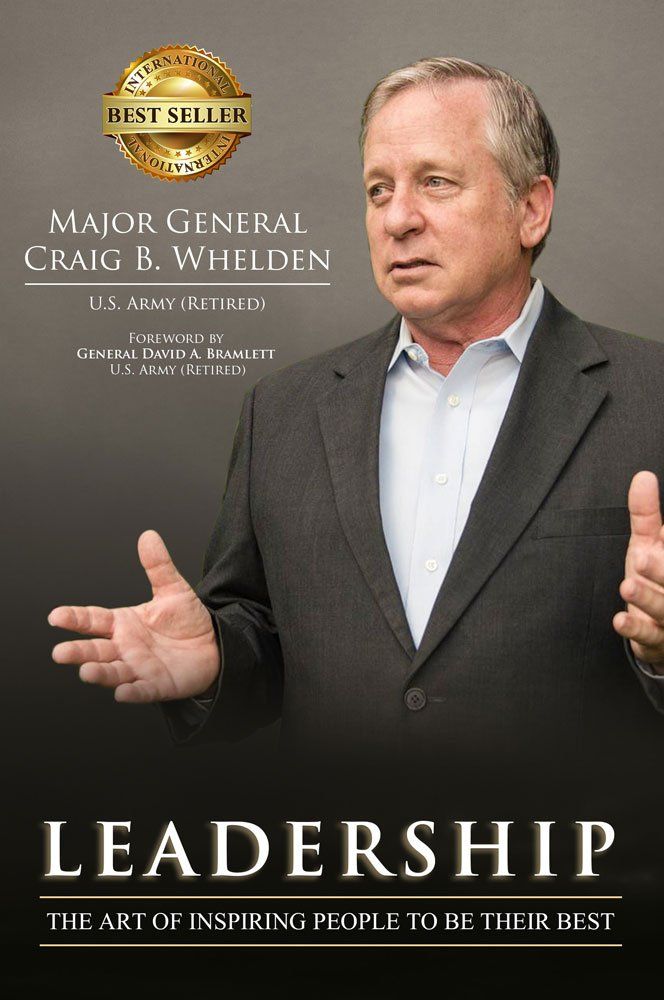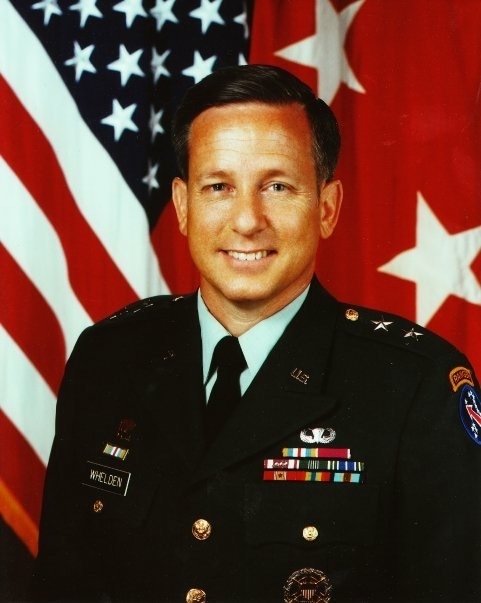FOREWORD:
What Now, Lieutenant?
More than 50 years ago while studying to be an Army officer, our class had a series of films to watch, titled, “What Now, Lieutenant?” Each short film would present a scenario during which the young and inexperienced lieutenant would face a challenge—a crisis of command—in which his soldiers would literally look to him for the resolution. The instructor would stop the projector (remember, this was 50 years ago) and then ask for the answer. We would occasionally get it right, but we always got the lesson: that good leaders must make good decisions for good reasons. I can still recall the exact details of the particular episode that stuck with me throughout my career. I think it was my first brush with learning about leadership.

I have known Craig Whelden for more than 20 years and have watched him in action as an Army General Officer and as a Senior Executive for the Marine Corps. As I read his book, I was reminded again of how much one can learn about leadership through watching others grapple with the demands of leadership and how each of them acts, makes decisions, and does not shy from accountability. We learn most from successful leaders, because we see what works and why. Craig is one such leader, and his ability to share his experiences—some of which are intensely personal—and articulate what he has learned enriches the reader.
The chapters are short, with intriguing titles. They contain several vignettes from his life with pertinent leadership examples and lessons. He is very clear in explaining each challenge, and he is equally straight-forward in explaining his solution. You’ll gain a valuable perspective on style and substance through his experiences. He is not pedantic… he is conversational. You will come away with guidelines and principles that mark a leader who others want to follow.

Craig provides compelling examples of leading units through change and turbulence. In fact, his leadership journey is also a biography of the American Army in one of its most transformative periods, 1973-2003, the exact 30 years Craig went from 2nd lieutenant to major general. He saw the agonizing recovery from the Vietnam War, the elimination of the draft, the training revolution, the success of the volunteer force, the rise of the joint force, and the nation again at war. Those who served during that period will find themselves remembering the many challenges that surfaced as the Army and the nation regained its footing after Vietnam. We owe Craig and his generation of officers our profound gratitude for what they accomplished in leading the Army from turbulence to triumph.


Craig provides compelling examples of leading units through change and turbulence. In fact, his leadership journey is also a biography of the American Army in one of its most transformative periods, 1973-2003, the exact 30 years Craig went from 2nd lieutenant to major general. He saw the agonizing recovery from the Vietnam War, the elimination of the draft, the training revolution, the success of the volunteer force, the rise of the joint force, and the nation again at war. Those who served during that period will find themselves remembering the many challenges that surfaced as the Army and the nation regained its footing after Vietnam. We owe Craig and his generation of officers our profound gratitude for what they accomplished in leading the Army from turbulence to triumph.
Craig provides compelling examples of leading units through change and turbulence. In fact, his leadership journey is also a biography of the American Army in one of its most transformative periods, 1973-2003, the exact 30 years Craig went from 2nd lieutenant to major general. He saw the agonizing recovery from the Vietnam War, the elimination of the draft, the training revolution, the success of the volunteer force, the rise of the joint force, and the nation again at war. Those who served during that period will find themselves remembering the many challenges that surfaced as the Army and the nation regained its footing after Vietnam. We owe Craig and his generation of officers our profound gratitude for what they accomplished in leading the Army from turbulence to triumph.
Yes, this is a book about successful leadership in a military environment. But, in virtually every vignette, one can extrapolate the essence and apply lessons to the corporate world, the not-for-profit world, or even the arena of leading volunteers. There is a lot here for every leader, neophyte or experienced. I suggest those serving or who have served will find themselves very easily in the book, and each may be able to compare their leadership experience to how Craig approached the challenge.
For me, the chapters on character, loyalty, virtual mentorship, ethics (Memento Mori) and hope (The Light at the End of the Tunnel) especially resonated. No surprise, Chapter 1 is about character; we know it’s the prerequisite for all effective leaders. Craig points out that loyalty is both a process and an investment. You’ll be surprised when you read the key to his getting the Senior Executive Service (SES) position with the Marine Corps, despite the odds. I have often argued for the under-appreciated value of the role model in leader development, but Craig elevates it properly in his unique take on virtual mentorship, with his four categories of mentors. I would have every senior executive, military and civilian, read Memento Mori, both for the examples and the lessons.
As I mentioned, Craig does not blanch when addressing the challenge of leading in the midst of personal setback and profound tragedy. He inspires here by baring his life and showing how a leader retains equilibrium while leading others, realizing there is a light—elusive in the moment—but still there at the end of the tunnel. Craig brings the cliché to life.
Every reader will find their own special chapters, as I did. If you want an executive summary, read Appendix A, Whelden Philosophy of Command. He was and is as good as his words. I know as I’ve watched and admired him as a leader, husband, and father.

As I mentioned, Craig does not blanch when addressing the challenge of leading in the midst of personal setback and profound tragedy. He inspires here by baring his life and showing how a leader retains equilibrium while leading others, realizing there is a light—elusive in the moment—but still there at the end of the tunnel. Craig brings the cliché to life.
Every reader will find their own special chapters, as I did. If you want an executive summary, read Appendix A, Whelden Philosophy of Command. He was and is as good as his words. I know as I’ve watched and admired him as a leader, husband, and father.
As I mentioned, Craig does not blanch when addressing the challenge of leading in the midst of personal setback and profound tragedy. He inspires here by baring his life and showing how a leader retains equilibrium while leading others, realizing there is a light—elusive in the moment—but still there at the end of the tunnel. Craig brings the cliché to life.
Every reader will find their own special chapters, as I did. If you want an executive summary, read Appendix A, Whelden Philosophy of Command. He was and is as good as his words. I know as I’ve watched and admired him as a leader, husband, and father.


Now, here’s a leadership vignette Craig did not provide: This past November my wife and I attended the annual Marine Corps Birthday Ball. Also in attendance were Marine Corps senior leaders, including Craig. After dinner, when the informal comradery took hold, groups of Marines gathered for photos. One large group of Marines of all ranks gathered in front of the large American flag, and they called for one man to join them. They had a choice of many senior Marines, but they chose Craig. There he stood with the Marines, unique in his civilian clothes, and the one they chose. Here was a leader who had gained their respect, admiration, and affection.

For 39 years, Craig has been the leader others want to follow. This book will surely add to the legacy of leadership he has left through his impact on others by inspiring them, and those who follow, to be their best.
David A. Bramlett
GENERAL, US Army (Retired)
Former Commander, US Army Forces Command